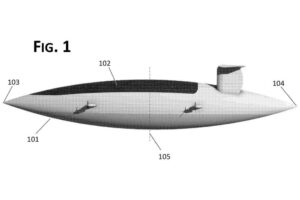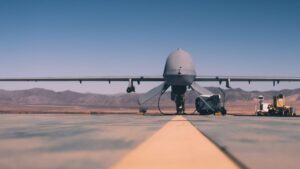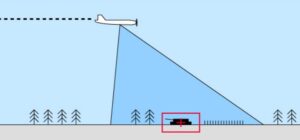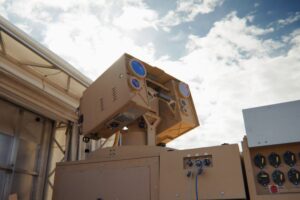Seccheto, Elba Island, February 2020
Mavic 2 pro
The post Seccheto, Elba Island, February 2020 appeared first on DRONESTAG.
Seccheto, Elba Island, February 2020
Mavic 2 pro
The post Seccheto, Elba Island, February 2020 appeared first on DRONESTAG.
Drone light shows cost easily $15,000 on the low end. But did you know you can put on your own drone light show for $10,000? The folks over at Drone Dojo put together a drone light show kit that includes 10 drones — and it all costs just about $1,000.
And that $10,000 figure isn’t just a one-time fee. Rather than pay $15,000 for another drone light show company to put on your show, you could put together your own DIY drones for $1,000 each. 10 drones would run you $10,000 — but would enable you to keep those drones to continue running shows time and time again.
The only other cost you’d need? A Blue Belt Membership to Drone Dojo (which typically costs $27 per month) that teaches you exactly how to build out this kit and how to use the corresponding software. Then there’s just any fees you need to actually put on the show (e.g. a drone pilot’s license, which will cost you about $150 in testing fees to earn) and potential permitting, insurance or staff fees, depending on whose land you’re flying for.
Whether you’re an entrepreneur looking to launch your own drone light show business, or just a tinkerer with some money to burn looking to make something epic, here’s exactly what you need to do to get started with launching your own drone light show:

The Drone Light Show Course from Drone Dojo ranks among the easiest ways to learn how to build your own drone light show kit.
That said, don’t expect an “easy” or “plug-and-play course. You’ll have to do some labor yourself. That includes soldering and 3D printing (though you can use a 3D printing service if you don’t have your own).
The course also assumes you already know the content from one of its other courses: how to build a Raspberry Pi drone. Alas, that’s the same drone in the guide.
The first 100 people to use coupon code DGLSKIT will get $50 off their PiHawk drone kit, which is currently otherwise running for $900!
But from there, you’ll go through a series of lessons, of which there are about 50.
The course starts by having you put together the actual lights themselves that you’ll put on your drone. Drone Dojo’s course teaches with Neopixel PCBs from Adafruit, which offer eight LEDs per stick.
The course also delves into RTK GPS, which is critical for drone light shows. RTK is commonly used in fields like mapping to ensure centimeter-level accuracy. But, it’s also critical for drone swarms, as that many drones in the sky means the drones must be flying in the exact, right place. (Plus, the animations just look sharper and cleaner with exact accuracy.
Building the drone’s hardware isn’t all though. Then, the course teaches you about drone light show software. Drone Dojo trains you on Skybrush, which is an excellent pick given its freemium model. You can fly up to a certain amount of drones using Skybrush for free. Though, they start to charge for larger fleets of drones around 100 or more.
Then, Drone Dojo’s course teaches some practical tips. For example, you’ll learn best practices for numbering the drones in your fleet, and how you should best layout your drone for takeoff.
And yes, you’ll finish out by actually putting on your own, first maiden drone light show.
You’ll dive deep into all of that in the Drone Dojo Drone Light Show Course, which runs about 6 hours in total across roughly 50 courses. But you can even get much of this information for free. Drone Dojo also released a free, multi-page guide to building a DIY drone light show. It’s not quite as in-depth as the full course, but it’s at least worth a look if you want to try to put together a drone light show without committing to the full Blue Belt membership.
You can access that course by holding a Drone Dojo monthly subscription members. Blue Belt membership, which costs $27 per month, is the cheapest membership tier that provides course access.
Conveniently, $27 per month covers the entire library of Drone Dojo courses beyond just the drone light show course. That includes their course teaching you how to build a Raspberry Pi drone, “How to program a drone using Python,” and a deep-dive, capstone-type course on “Precision Landing and Drone Delivery.”
And you don’t even have to pay $27! Drone Dojo hooked up the first 100 Drone Girl readers with an exclusive discount code:
The first 100 readers to use discount code DGLSCOURSE will get off Blue Belt Membership for the first month. That’s $9 for the first month, and $27 after that, though you can cancel at any time.
Though if you’re actually planning to buy drone kits from Drone Dojo (more on why you want to do that later) you might also opt for the $47-per-month Purple Belt membership or even the $997-per-month Black Belt membership. That’s because the higher-tier memberships also net bigger discounts on drone kits. Those in turn can easily pay for itself if you’re buying the number of kits you’d need to put on a drone light show.
Here’s some relevant reasons why you might opt for Purple or Black Belt over Blue Belt:
| Blue Belt | Purple Belt | Black Belt | |
| Monthly subscription cost | $27 | $47 | $997 |
| Access to All Dojo Courses? | Yes | Yes | Yes |
| Github Code Access? | Yes | Yes | Yes |
| Discount on Drone and Rover Kits | $30 off | $50 off | $100 off |
| Custom Parts for Projects? | No | Yes | Yes |
| Priority Technical Support and Project Coaching? | No | No | Yes |
| Additional Licenses? | N/A | N/A | 20 Licenses For All Courses & Projects |
Buying one or two drone kits would easily justify the additional cost of Purple Belt over Blue Belt. For someone seeking custom support, even the pricey Black Belt might be worth it.

The Drone Dojo DIY light show tutorial requires you have quite a few items — though hobbyists and tinkerers may already own quite a few of these things. With a Drone Dojo Blue Belt or higher membership, you also get access to the 3D printable mounts. Those mounts are used to mod the Pixhawk drone kits with the LED attachment.
According to Drone Dojo, their DIY drone show course requires you to purchase pieces including:
It also assumes you have some fairly standard hobby shop gear, such as a soldering iron and solder, electrical tape and a 3D printer (though you might use a 3D-printing service for that part).
Each PiHawk drone kit currently sells for $899 on the Drone Dojo website. Throw in the extra items like the NeoPixel sticks, diffuser, screws, (plus the course cost itself) etc. to get to $1,000 per light show drone.
Though there is some good news. I have a discount code!
The first 100 people to use coupon code DGLSKIT will get $50 off their PiHawk drone kit, which is currently otherwise running for $900!

And by the way, the $10,000 figure quoted assumes you want 10 drones in your show. 10 is basically the minimum number of drones needed to pull off a drone show. Of course, you could make a single drone that transforms into your colors of choice — and into position — for far less.
It also requires the suite of Skybrush drone light show software, which consists of:
But while this is very likely the cheapest way to have a light show drone, time (and headache) is money. You could very well just purchase largely ready-to-fly light show drones made by other companies.
Among the biggest makes of light show drones includes a handful of American drone companies such as Michigan-based Firefly and Texas-based Verge Aero. There’s also Unify, which is a huge player given their use by Sky Elements, which is one of the top drone light show companies in the world. Sky Elements put on the first drone show I’d seen in person, the Star Wars show at the Oakland Coliseum. It’s also run other fun shows like the Serena Williams’ gender reveal party.
Again, just note the additional cost. Whereas Drone Dojo quotes the total cost at about $1,000 per DIY drone, most other drones cost close to twice that (or more). For example, UVify’s IFO light show drone costs $1,700 per drone. Though, that additional cost also bakes in all ground control systems as well as other software, 24/7 support, and training.
If launching a drone show on the U.S. that has any sort of commercial ties (not just you launching your own free drone show for the fun of it in your yard), someone on the team, onsite, needs a Federal Aviation Administration Part 107 License. That’s an FAA requirement, which states that all commercial drone flights have a Remote Pilot In Command, which is a person who holds a current Remote Pilot Certificate.
Luckily, the license isn’t terribly difficult to get. You just need to pass a written test, which can typically be done with a few days of studying.
You’ll also need a waiver to fly multiple drones at once (assuming you have more drones than pilots). FAA Part 107.35 states that “a person may not manipulate flight controls or act as a remote pilot in command or visual observer in the operation of more than one unmanned aircraft at the same time.”
To get around that, you can apply for an FAA waiver. Lawyer Jonathan Rupprecht has some pretty good information about that waiver and FAA waivers as a whole. Rupprecht also has a business of helping drone pilots get waivers, so in exchange for money, he can do the legal work for you.
Plan ahead, as it can easily take more than a month to get approved for one of those waivers. Luckily though, waivers tend to be per company, not per show. They usually last for about two to four years.
There are no federal or state regulations requiring aircraft insurance. However, it’s unlikely you’d put on a drone show without insurance given the risk involved. Though not legally required, you’ll likely want:
Especially if you’re trying to land clients at wedding venues, festivals or other big event sites, it’s unlikely the landowners would even book you if you didn’t have drone insurance.
There are also some situations where you might need additional permits, such as if you’re flying over 400 feet AGL. Consult an attorney before launching a drone show.

So you’ve got all your drones together. You’ve learned how to operate them. You’ve consulted with an attorney. From there, you can launch a drone show company. You likely won’t be able to do it all yourself. Your team should include:
And luckily, demand for drone shows is huge. Hundreds of drone shows occur around the world every year, especially during times you’d expect to see big fireworks shows. Drone shows really light up around New Years, July Fourth or for other major festivals, such as annual rodeos or state fairs.
As far as the price of a drone show, it’s the drone show businesses who tend to have the upper hand in terms of cost right now. That’s largely thanks to little competition driving down prices. Most drone show companies charge at least $15,000 per show. And that means companies with smaller fleets might be able to make up their upfront costs fairly quickly.
Much of how much you can charge comes down to both quality of shows (check out the best drone shows of 2023 to see what you’re competing with) and marketing. Companies like Sky Elements have leveraged social media to market shows — their YouTube channel is one of the best drone YouTube channels, period. Additionally, network with event planners, venue managers, and marketing agencies to reach potential clients.
Don’t wait to be a part of the future of entertainment — and don’t sleep on being on the cutting edge of the drone industry. Your next business venture could be launching your own drone show business. And for $10,000, a 10-drone light show kit might be that first step.
The first 100 readers to use discount code DGLSCOURSE will get off Blue Belt Membership for the first month. That’s $9 for the first month, and $27 after that, though you can cancel at any time.
The post How to launch your own drone show business (with a $10,000 drone light show kit) appeared first on The Drone Girl.
 Insitu, A Boeing Company, announces its 30th anniversary this week at The Navy League’s Sea-Air-Space Conference & Exhibition in National Harbor, Maryland. The celebration will continue throughout the year as Insitu reflects on three decades of autonomous flight experience and historic moments while building the future of long-endurance, field-proven Uncrewed Aircraft Systems (UAS). Founded in […]
Insitu, A Boeing Company, announces its 30th anniversary this week at The Navy League’s Sea-Air-Space Conference & Exhibition in National Harbor, Maryland. The celebration will continue throughout the year as Insitu reflects on three decades of autonomous flight experience and historic moments while building the future of long-endurance, field-proven Uncrewed Aircraft Systems (UAS). Founded in […] H2 Clipper, Inc. (“H2C”), an aerospace and alternative energy company developing uniquely capable hydrogen-powered dirigibles, announced that it was granted a new U.S. patent for its warehouse-in-the-sky that includes the integration of aerial drones for picking up, transporting, and delivering packaged goods and other payloads. The technology incorporates: the use of a beacon, which can […]
H2 Clipper, Inc. (“H2C”), an aerospace and alternative energy company developing uniquely capable hydrogen-powered dirigibles, announced that it was granted a new U.S. patent for its warehouse-in-the-sky that includes the integration of aerial drones for picking up, transporting, and delivering packaged goods and other payloads. The technology incorporates: the use of a beacon, which can […] Hughes Network Systems, an EchoStar company, announced that it has been awarded a production contract from General Atomics Aeronautical Systems, Inc. (GA-ASI) to produce a key component of the next-generation satellite communications (SATCOM) system for the MQ-1C Gray Eagle 25M Unmanned Aircraft System (UAS). Under the contract, Hughes will provide advanced, ruggedized HM400 modems, named […]
Hughes Network Systems, an EchoStar company, announced that it has been awarded a production contract from General Atomics Aeronautical Systems, Inc. (GA-ASI) to produce a key component of the next-generation satellite communications (SATCOM) system for the MQ-1C Gray Eagle 25M Unmanned Aircraft System (UAS). Under the contract, Hughes will provide advanced, ruggedized HM400 modems, named […] Ukraine is developing artificially intelligent drones that will be harder for Russia to shoot down, The Telegraph can disclose. The push to create an image recognition targeting system, which can autonomously hunt and strike targets, is backed by more than £200 million in Western finance from a UK-led drone coalition. Kateryna Chernohorenko,Ukraine’s deputy defence minister, said […]
Ukraine is developing artificially intelligent drones that will be harder for Russia to shoot down, The Telegraph can disclose. The push to create an image recognition targeting system, which can autonomously hunt and strike targets, is backed by more than £200 million in Western finance from a UK-led drone coalition. Kateryna Chernohorenko,Ukraine’s deputy defence minister, said […] The Palletized High Energy Laser (P-HEL) system, developed by BlueHalo in support of the U.S. Army Rapid Capabilities and Critical Technologies Office (RCCTO), has a proven track record of successfully engaging and eliminating small unmanned aerial system (sUAS) threats to forces and critical infrastructure–a rapidly growing concern to U.S. battlefield dominance. BlueHalo was awarded a […]
The Palletized High Energy Laser (P-HEL) system, developed by BlueHalo in support of the U.S. Army Rapid Capabilities and Critical Technologies Office (RCCTO), has a proven track record of successfully engaging and eliminating small unmanned aerial system (sUAS) threats to forces and critical infrastructure–a rapidly growing concern to U.S. battlefield dominance. BlueHalo was awarded a […]The UVH-170 Drone: A Step Forward in Aerial Surveillance for Firefighting Autonomous UAV developer UAVOS recently announced that their UVH-170 unpiloted helicopter was successfully used to support wildfire suppression efforts, including night operations. Utilizing its combination of visible-light and thermal imaging cameras, the UVH-170 provided vital real-time geospatial mapping, verifying the “Gimbal 201” system meets […]
The post UAVOS Introduces Unpiloted Helicopter for Wildfire Suppression appeared first on DRONELIFE.
Advancing Drone Delivery: Wingcopter and ITOCHU Initiate Certification Process in Japan In a significant step toward expanding drone delivery services in Japan, Wingcopter, in collaboration with ITOCHU Corporation, has initiated the type certification process for its Wingcopter 198 delivery drone, according to a company press release. This milestone marks the first instance of a foreign […]
The post Wingcopter and ITOCHU Advance Drone Delivery in Japan with New Certification Process appeared first on DRONELIFE.
Revolutionizing Medical Logistics: Speedbird Aero’s Historic Certification for Drone-Based Biological Substance Transport in Latin America Images courtesy Speedbird Aero. According to a company press release, Speedbird Aero, a leading innovator in the drone technology sector, has achieved a significant milestone in the unmanned aerial systems (UAS) field. On February 29, 2024, the Brazilian National Civil […]
The post Speedbird Aero Receives Historic Certification for Biological Substance Transport via Drones in Latin America appeared first on DRONELIFE.

